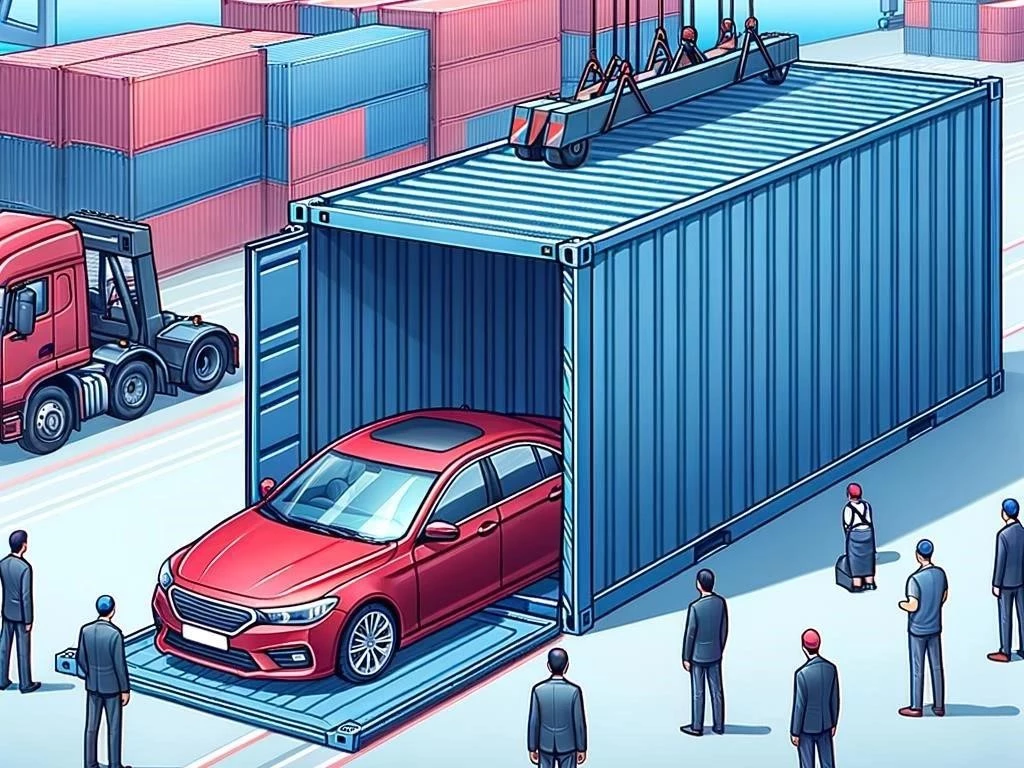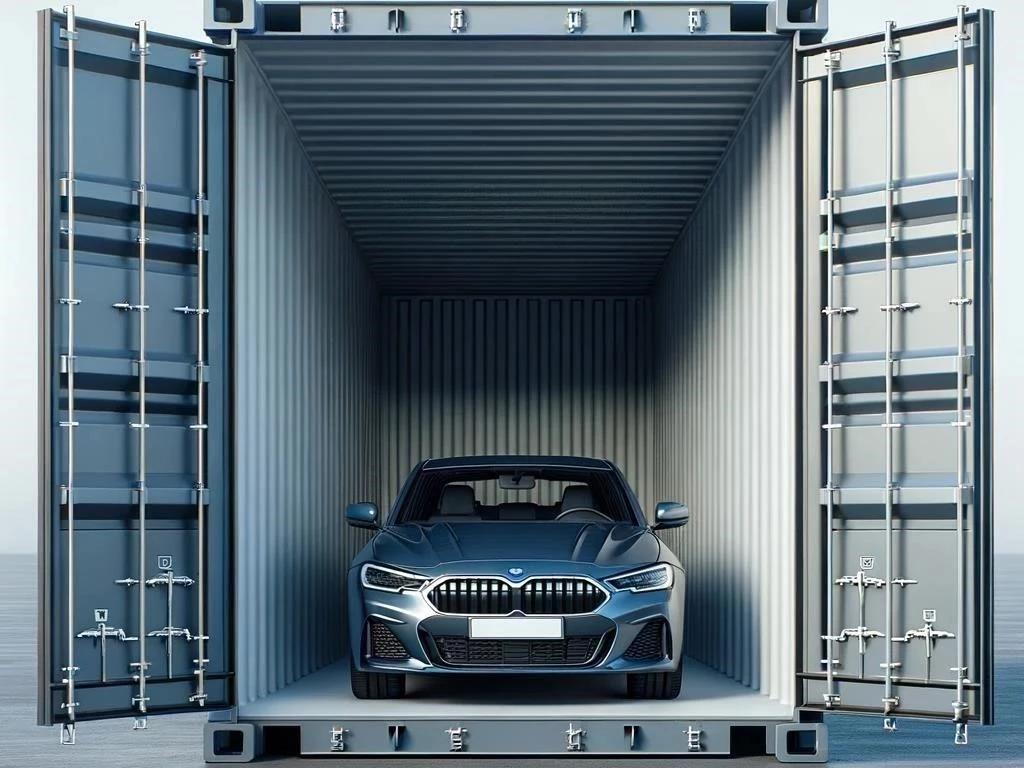Can a Car Fit in a Shipping Container?
Determining if a car fits in a shipping container requires understanding shipping container dimensions, vehicle measurements, and specific car dimensions to ensure proper container loading and compliance with transport regulations.
Understanding Shipping Container Dimensions
Shipping container dimensions play a crucial role in determining whether a car can fit inside. Standard shipping containers typically come in 20-foot and 40-foot lengths, with varying heights and widths. A standard 20-foot container has an internal width of approximately 7.7 feet and a height of 7.9 feet, while the 40-foot container maintains the same width but offers nearly double the length. When considering car shipping, it’s essential to account for the vehicle’s dimensions, including its height, width, and length, to ensure proper fitting. Additionally, the container’s internal space must accommodate not just the vehicle, but also any necessary loading equipment and protective materials. Understanding these shipping logistics allows for efficient container loading and helps avoid potential issues during transportation, ensuring compliance with international shipping standards and maximizing container capacity for vehicle transport.
Common Container Sizes for Vehicle Transport
When considering vehicle transport, common container sizes are vital for ensuring a proper fit. The most frequently used containers are the 20-foot and 40-foot models. A 20-foot container typically has an internal width of about 7.7 feet and height of 7.9 feet, making it suitable for compact cars or motorcycles. Meanwhile, the 40-foot container offers double the length, allowing for larger vehicles or multiple smaller cars to be shipped together. Additionally, some specialized containers are designed for automotive shipping, featuring reinforced floors and adjustable loading mechanisms. It’s crucial to understand the container size’s limitations and specifications to ensure that the vehicle dimensions align with the available space. Properly selecting the right container size not only enhances loading techniques but also reduces shipping costs and ensures compliance with transport regulations, making the entire vehicle transport process more efficient.

Car Measurements and Vehicle Dimensions
Understanding car measurements and vehicle dimensions is essential for determining whether a car fits in a shipping container, ensuring compliance with transport regulations and optimizing loading techniques for safe transport.
Standard Car Dimensions
Standard car dimensions vary widely depending on the type and model of the vehicle, but most passenger cars typically range from 12 to 16 feet in length, 5 to 6.5 feet in width, and 4;5 to 5.5 feet in height. For example, compact cars may measure around 12 to 14 feet long, while larger SUVs and trucks can reach lengths of 16 feet or more. Understanding these dimensions is crucial for ensuring that the vehicle can fit into a shipping container. Additionally, knowing the overall height and width helps assess whether the car will comply with the container’s internal specifications. When preparing for automotive shipping, it’s essential to measure your vehicle accurately, taking into account any external modifications that may affect the overall size, such as roof racks or spoilers. Accurate measurements facilitate efficient container loading and minimize potential shipping costs associated with oversized vehicles.
Measuring Your Vehicle for Container Fitting
Measuring your vehicle for container fitting is a critical step in ensuring a successful shipping experience. Begin by using a tape measure to determine the length, width, and height of your vehicle. Make sure to measure from the longest points, including any modifications like spoilers or roof racks, which could affect the overall dimensions. Record these measurements carefully. Next, compare your vehicle’s dimensions with the internal dimensions of the shipping container you plan to use, typically a 20-foot or 40-foot container. Ensure that there is adequate space for loading, unloading, and protective materials. Additionally, consider the container’s weight limit, as it may impact the total shipping costs. Knowing your vehicle’s exact dimensions allows you to choose the appropriate shipping method and container size, ultimately ensuring compliance with transport regulations and facilitating efficient container loading during the shipping logistics process.
Shipping Methods for Automotive Shipping
Various shipping methods are available for automotive shipping, each offering unique advantages. Choosing the right method ensures efficient transport logistics and maximizes container capacity for vehicle fitting and safety.
Types of Shipping Containers Used for Car Shipping
When it comes to car shipping, several types of shipping containers are commonly utilized to accommodate various vehicle sizes and types. The most frequently used containers are the standard 20-foot and 40-foot containers, which provide ample space for most passenger vehicles. Additionally, specialized containers, such as car carriers or high-cube containers, are designed specifically for automotive shipping. High-cube containers offer extra height, allowing for taller vehicles or additional cargo space. Another option is the flat rack container, which is ideal for oversized vehicles or those without wheels. Each container type has unique loading techniques and space requirements, so it’s essential to choose the right one based on your vehicle’s dimensions. Understanding these options helps ensure compliance with shipping logistics, optimizes container capacity, and minimizes the risk of damage during transport, making the entire automotive shipping process smoother and more efficient.
International Shipping Considerations
When shipping a car internationally, several considerations must be taken into account to ensure proper fitting in the shipping container. First, it’s crucial to understand the transport regulations of both the origin and destination countries, as these may affect vehicle compliance and necessary documentation. Additionally, customs regulations may require specific paperwork, such as proof of ownership and emissions standards. Accurate measurements of the vehicle are essential to determine if it fits within the container’s dimensions, accounting for any additional protective materials. It’s also important to consider the shipping method, as some options may provide better protection against damage during transit. Insurance for the vehicle during shipping is advisable, as it offers financial security against potential losses. Finally, understanding international shipping costs can help budget effectively and select the most economical option for vehicle transport while ensuring all logistical aspects are properly managed.
Container Capacity and Space Requirements
Understanding container capacity and space requirements is essential for vehicle transport, ensuring that cars fit properly within shipping containers while complying with loading techniques and transport regulations effectively.
How Much Space is Required for Car Fitting?
Determining how much space is required for car fitting in a shipping container involves carefully evaluating the vehicle’s dimensions and the container’s internal specifications. Generally, a standard 20-foot container offers approximately 1,170 cubic feet of internal space, while a 40-foot container provides about 2,390 cubic feet. When fitting a car, it’s crucial to consider not just the vehicle’s length, width, and height, but also any additional space for protective materials and proper loading techniques. Typically, a clearance of around 4 to 6 inches is recommended to accommodate any potential movement during transit. Furthermore, if multiple vehicles are being shipped, the space requirements will increase accordingly, necessitating meticulous planning. Understanding these space requirements ensures that the vehicle fits comfortably within the container, minimizes the risk of damage, and adheres to shipping logistics, all while optimizing container capacity for efficient transport.
Understanding Container Loading Techniques
Understanding container loading techniques is crucial for ensuring that a car fits snugly and safely within a shipping container. Proper loading begins with assessing the vehicle’s dimensions and aligning them with the container’s internal specifications. Techniques such as using ramps or forklifts can facilitate the loading process, particularly for heavier vehicles. It’s essential to secure the car with appropriate tie-down straps or wheel chocks to prevent movement during transit. Additionally, when loading multiple vehicles, strategic positioning can optimize container capacity and maximize space utilization. Utilizing corner blocks or dunnage can protect the vehicle from damage caused by shifting cargo. It’s also important to follow specific loading guidelines set by shipping logistics providers to comply with transport regulations. Understanding these loading techniques not only ensures the vehicle’s safety during shipping but also streamlines the overall shipping process, enhancing efficiency and reducing potential shipping costs.
Shipping Costs and Freight Shipping
Shipping costs and freight shipping details are essential for understanding the overall expenses involved in transporting a car, ensuring proper budgeting and compliance with transport regulations during the process.
Factors Influencing Shipping Costs
Several factors influence shipping costs when transporting a car in a container. First, the size and type of the container play a significant role; larger containers or specialized carriers often incur higher fees. Additionally, the distance between the origin and destination affects costs, with longer routes typically resulting in increased shipping expenses. Fuel prices and fluctuating freight rates also impact overall shipping costs. Moreover, the choice between open and enclosed auto shipping can lead to differences in pricing, with enclosed options generally costing more due to added protection; Insurance coverage for the vehicle is another factor that can raise costs, but it provides peace of mind against potential damage during transit. Seasonal demand fluctuations and port fees may also contribute to varying shipping costs. Understanding these factors enables better budgeting and allows you to make informed decisions regarding vehicle transport logistics.
Cost Comparison: Open vs. Enclosed Auto Shipping
When comparing costs between open and enclosed auto shipping, it’s essential to understand the differences in pricing and protection. Open auto shipping is typically more affordable, as it allows multiple vehicles to be transported simultaneously on an open trailer. This method is ideal for standard vehicles and offers significant savings, especially for long-distance transport. However, it exposes the car to weather elements and road debris, which may lead to potential damage. On the other hand, enclosed auto shipping provides a higher level of protection, as vehicles are transported inside a fully enclosed trailer. This method is more expensive due to the added security and reduced risk of damage, making it suitable for luxury or classic cars. Ultimately, the choice between open and enclosed shipping depends on the vehicle’s value, desired protection level, and budget, ensuring that the best shipping method is selected for each situation.
Transport Regulations for Vehicle Transport
Transport regulations for vehicle transport are crucial for ensuring compliance and safety during shipping, affecting container fitting, loading techniques, and overall logistics in the automotive shipping process.
Legal Requirements for Shipping Cars Internationally
Shipping cars internationally involves adhering to various legal requirements that ensure compliance with both local and international regulations. First, all vehicles must have proper documentation, including proof of ownership, a bill of sale, and any necessary customs forms. Additionally, many countries require vehicles to meet specific emissions and safety standards, which may necessitate modifications before shipping. Import duties and taxes may also apply, so it’s essential to research the destination country’s regulations regarding vehicle imports. Furthermore, some countries have restrictions on certain vehicle types or models, necessitating careful planning. Insurance coverage during transport is advisable to protect against potential loss or damage. Understanding these legal requirements is crucial for a smooth shipping process and avoiding potential delays or penalties. Consulting with a shipping expert familiar with international regulations can facilitate compliance and streamline the overall vehicle transport process.
Safety Standards in Shipping Logistics
Safety standards in shipping logistics are vital for ensuring the secure transport of vehicles in containers. These standards encompass various aspects, including container integrity, loading techniques, and securing methods. Each shipping container must meet international safety specifications, ensuring it can withstand the rigors of transport and environmental conditions. Proper loading techniques are essential to prevent damage; vehicles should be loaded in a way that distributes weight evenly and minimizes movement during transit. Additionally, using appropriate securing methods, such as tie-down straps and wheel chocks, is necessary to keep the vehicle stable within the container. Regular inspections of containers and securing equipment help maintain compliance with safety regulations and prevent accidents. Furthermore, shipping companies must train their staff in handling and securing vehicles correctly, ensuring adherence to best practices. Overall, these safety standards help ensure a smooth shipping process, protecting both vehicles and personnel during transport.








